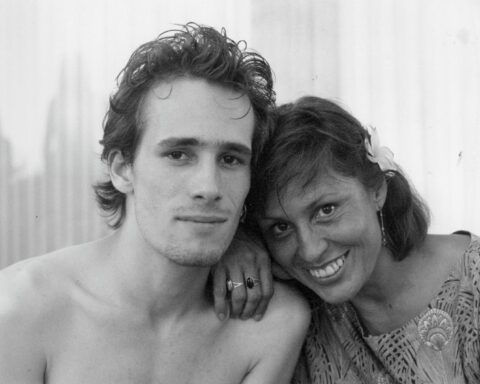Design Canada
(Canada, 74 min.)
Dir. Greg Durrell
The question of a “brand identity” is difficult to tackle. Corporate values, principles, history, and mandates combine with consumer-friendly concision. Now imagine this entity has thirteen unique departments, one of which considers itself a distinct brand-within-a-brand, two official languages and countless unofficial ones, a sprawling geographical range, and a rocky history of cultural genocide. The long road to Canada’s brand is a tricky one. However, this productive conversation ensures the collective identity undergoes constant reappraisal.
The question of the national brand identity fuels an engaging discussion in Design Canada. This upbeat and patriotic doc from Greg Durrell surveys the history of iconic images that are central to Canadian nationalism. The film puts under the microscope the brands and logos that stir a sense of national pride. Icons for institutions such as the CBC, Royal Bank of Canada, Canadian National Railway, and Roots are a few of the logos that audiences should recognize. Much of the film looks to the logos of the 1960s when conversations of Canadian national consciousness peaked with innovations in design. Audiences might think of the boozy, swinging 60s as the Mad Men days, but the doc argues that Canadians led the charge for good design during those heady times.
Durrell, a graphic artist whose portfolio includes the Canadian Olympic Team branding, ensures the film itself is a model of good design. Vibrant colours and bright lighting make for warm and accessible interviews, while unique title cards play with spatial relations in the frame. The cleanliness of the design guarantees that one doesn’t lose sight of the message.
Interviews with personalities like broadcaster George Stroumboulopoulos, journalist Hannah Sung, author Douglas Coupland, and graphic designers Burton Kramer (creator of the original CBC logo), Stuart Ash (the man behind the triangular maple leaf symbolising Canada’s centennial), and Heather Cooper, (whose Roots beaver adorns a sweater in nearly every Canadian closet) add perspectives to the conversation. Design Canada illuminates the many pieces that comprise the puzzle of Canadian identity.
Design Canada begins with the biggest image of all: the Canadian flag. Durrell chronicles the great flag debate of the 1960s and Prime Minister Lester B. Pearson’s mission to unite the nation with a new flag for Canada’s Centennial. The talking heads of Design Canada observe with good humour that it took nearly 100 years after confederation for Canadians to realize they deserved their own flag to wave with pride. The rebranding of Canada with the flag epitomized the challenge of forming a collective national consciousness in such a diverse nation.
The talking heads note the significance of iconic “Canadian” images like the maple leaf and the beaver, but beyond the enjoyable appraisals of Canadiana, the stronger aspects of the conversation engage with the actual design of the prospective flags. Even a Canadian who has looked at the national flag every day may have taken this conversation for granted. (The old Red Ensign with the Union Jack and coat of arms slapped like patchwork on a rectangle was neither a grand feat of design nor a symbol with which to rally the masses.) The graphic designers marvel at the cleanliness of the flag with its thirteen-point maple leaf and red bars encapsulating a nation from sea to sea. The simplicity of the Canadian design is a national hallmark one sees in brands from coast to coast.
Moreover, the flag debate exemplifies how icons carry strong emotional connections. From the stuffy three-leafed “Pearson Pennant” the PM favoured to John Diefenbaker’s conservative, full-throttle tirade against change, the doc draws out the cultural conversations these images embody. Brand recognition relies on relationships, so the alteration of a corporate logo—a contentious conversation that fuels one of the more engaging chapters of the doc—illustrates the challenges of introducing change.
These reappraisals of Canadian identity ultimately signal a strong national consciousness. Design Canada looks at inclusive efforts to rebrand the nation by acknowledging facets of the population traditionally omitted from the discussion of “Canadianness.” Ensuring that French and English appeared in equal font and size on all national brands, for example, was a stride towards unity. Another segment of the film shows how the efforts of Expo ’67 highlighted the Indigenous cultures of the land and gave a first step for self-representation by acknowledging that history differed from the sanitized version offered by schoolbooks. The interviews with figures like Sung and Stroumboulopoulos add to this conversation by emphasizing the need to see the fluidity of the Canadian identity: just like corporate logos, our idea of “Canadian” will date itself if it doesn’t embrace change.
Design Canada opens at Hot Docs Ted Rogers Cinema on June 22.
Design Canada – Documentary Film Trailer from Hulse & Durrell on Vimeo.







